No products in the cart.
Return To Shop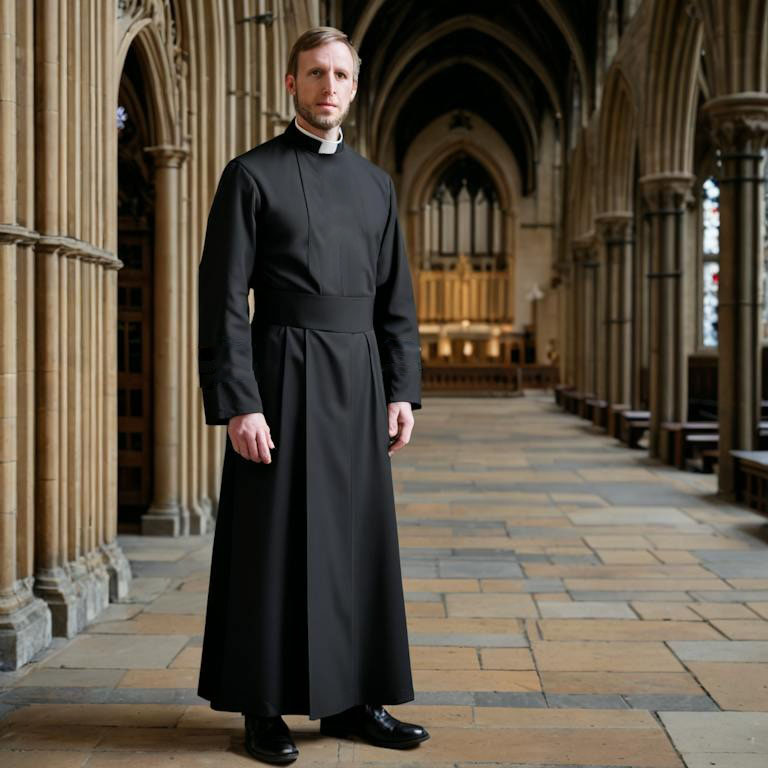
Exploring the Rich Cassock History Through the Ages
Cassock history dates back centuries, where it emerged as a symbol of devotion, humility, and tradition. Imagine standing in a grand cathedral centuries ago.
The flickering glow of candlelight illuminates the stone walls, and the soft rustle of robes fills the air as clergy walk solemnly to the altar. The cassock stands out as a symbol of devotion, humility, and tradition among the sacred vestments they wear.
The cassock, a garment steeped in cassock history, is not just a piece of clothing; it’s a bridge between faith and culture, past and present. In this article, we’ll unravel the story of the cassock, exploring its meaning, styles, and significance in modern religious life.
Understanding the Cassock and Its Meaning
- The cassock is a long, close-fitting robe traditionally worn by clergy.
- Cassock with surplice meaning: A cassock paired with a surplice symbolizes the liturgical and ministerial role of clergy members.
- Cassock meaning in English: Derived from the Italian “casacca,” meaning “long coat,” the cassock is deeply rooted in tradition.
The Origins of the Cassock: A Glimpse into Cassock History
The cassock’s roots trace back to the early Church, evolving from the everyday tunics worn in ancient Rome. As clergy sought to distinguish themselves from the laity, these tunics gradually transformed into longer, more elaborate garments, serving as a precursor to the cassock we know today.
The term “cassock” itself comes from the Italian word casacca, meaning a long coat. However, it wasn’t merely about functionality; the cassock soon became a symbol of faith and dedication.
As Christianity spread across the Roman Empire, the cassock grew into a distinctive sign of the clergy’s separation from secular life, representing their unwavering commitment to spiritual service. It became an essential tool for religious leaders to identify themselves as representatives of the Church.
Cassock with surplice meaning: Over time, the cassock was paired with the surplice, a white, flowing garment symbolizing purity and service. Together, they represented a clergy member’s commitment to their sacred duties.
Alb vs. cassock: While the alb is a simpler, white robe symbolizing baptismal purity, the cassock embodies the clergy’s vocational journey and a deeper, lifelong commitment to faith.
[ux_product_categories style=”default” col_spacing=”xsmall” columns=”5″ depth=”1″ number=”10″]
The Evolution of Cassock Styles
As the Church expanded across regions and cultures, the cassock adapted to reflect both tradition and practicality.
- 33 buttons cassock: Did you know the buttons on a cassock often hold symbolic meaning? The 33 buttons on some cassock history represent the years of Jesus Christ’s life.
- Double-breasted cassock: A modern variation with overlapping front panels, often favored for its contemporary look.
- Anglican cassock alb: A blend of Anglican tradition and Catholic heritage, it combines the alb’s simplicity with the cassock’s elegance.
Other fascinating variations include:
- Cassock alb with hood for practicality in colder regions.
- Butterick cassock pattern: A favorite among those who prefer to sew their cassocks at home.
These styles reflect the cassock’s ability to adapt while preserving its sacred significance. Some regions, such as Eastern Orthodox traditions, have their own variations, with distinctive cuts and accessories to reflect local cultural influences.
Colors of the Cassock: A Language of Symbolism
In the world of cassocks, color is never arbitrary. Each shade carries a message, reflecting the wearer’s role and the occasion’s solemnity.
- Black cassock: The most common, symbolizing humility and service. Variations include:
- Black cassock with red piping for cardinals.
- Black cassock buttons, intricately designed to enhance the robe’s elegance.
- Purple cassock: Reserved for bishops, signifying their authority.
- Blue cassock: Worn during Marian feasts to honor the Virgin Mary.
- Brown cassock: Often seen on monks, reflecting simplicity and renunciation.
Each color tells a story, weaving the wearer’s identity into the fabric of tradition. During liturgical seasons like Advent and Lent, purple cassocks may be worn to reflect a period of penance, while during joyful feasts like Christmas, celebratory colors or even gold accents may be chosen.
The Cassock’s Role Across Religious Traditions
Picture a solemn Anglican service, where the clergy don the cassock and surplice, their flowing robes creating a sense of unity and reverence. Or a Catholic Mass, where altar servers in black cassocks assist the priest in sacred rituals. The cassock history transcends denominations, linking clergy across traditions in a shared expression of faith.
- Anglican cassock: Often accompanied by a cassock belt, it highlights the Anglican Church’s distinct liturgical identity.
- Choir cassocks and surplices: A staple for choir members, these garments unite the voices in song with the spirit of worship.
- Monk cassock: Designed for simplicity and comfort, it reflects monastic values of humility and devotion.
The cassock is also worn by clergy in higher education settings and public ceremonies, allowing it to continue symbolizing authority and reverence beyond the walls of churches.
Accessories and Practicalities of the Cassock
While the cassock history itself is a masterpiece, its accessories complete the ensemble.
- Cassock fascia and sash: These are used to cinch the waist, adding both function and flair.
- Cassock shoulder cape: A stylish yet practical addition for colder climates.
- Cassock hat: Though less common today, it once symbolized clerical dignity.
Modern cassocks also embrace practicality, with lightweight fabrics for summer and designs like the cassock alb with hood for added versatility. The fascia, traditionally worn as a sash, is not only decorative but serves as a reminder of the clergy’s readiness for service.
A Glimpse into Modern Cassock Trends
Fast-forward to today, where cassocks are no longer confined to church walls. Their timeless elegance has found its way into broader cultural contexts.
- Cassock costume: Whether for theatrical productions or historical reenactments, the cassock’s distinctive silhouette is unforgettable.
- Cassock Amazon and cassocks for sale UK: Online platforms have made cassocks accessible to a global audience.
- Custom cassocks: Many modern cassock makers offer custom designs, allowing clergy to blend tradition with personal expression.
Fun fact:
The cassock even appears in popular culture, including references in video games like Skyrim, showcasing how this sacred garment continues to inspire modern creatives.
Crafting and Wearing the Cassock
Have you ever wondered how a cassock is made? From selecting the fabric to sewing the intricate buttonholes, creating a cassock is both an art and a labor of love. DIY enthusiasts can use a cassock sewing pattern free, such as the Butterick cassock pattern, to craft their own robes. For the perfect fit, understanding cassock measurements is key, as even small differences in length or fit can change the overall look and comfort of the garment. Wearing a cassock is more than just putting on a robe it’s about embodying the values it represents. The act of donning a cassock signifies a commitment to faith, service, and tradition, making it much more than just clothing.
Conclusion
The cassock is more than a garment; it’s a testament to centuries of faith, tradition, and service. From the black cassock with red piping to the 33-button cassock, each detail tells a story of devotion and identity. Whether you’re exploring its history or looking to purchase your own, the cassock history remains a timeless symbol of spiritual commitment.
Discover a wide range of cassocks, albs, and clergy attire at Holy Clergy, where tradition meets modern needs.
[ux_latest_products columns=”4″ title=”Check our Latest products!”]
Frequently Asked Questions (FAQs)
What’s the difference between a cassock and an alb?
The alb is a white garment symbolizing purity, while the cassock is a long robe often worn beneath or in place of an alb.
Why does a cassock have 33 buttons?
The 33 buttons symbolize the years of Jesus Christ’s life on Earth.
Can deacons wear cassocks?
Yes, deacons often wear cassocks, typically simpler in style than those of priests or bishops.
Where can I buy cassocks?
You can find cassocks at specialized stores like Holy Clergy or online platforms such as Amazon.
What colors of cassocks are most common?
Black cassocks are the most common, but colors like purple, blue, and brown are also worn depending on the clergy’s role and occasion.



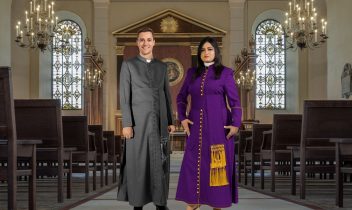
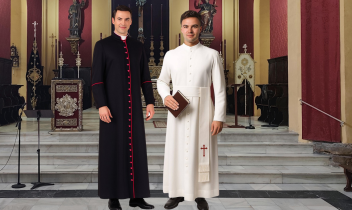
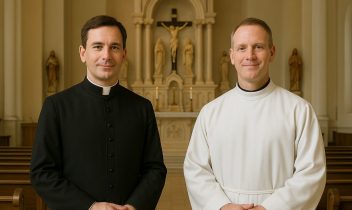
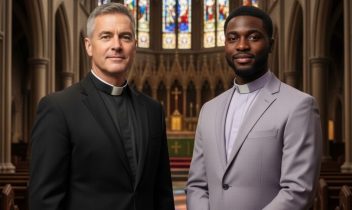
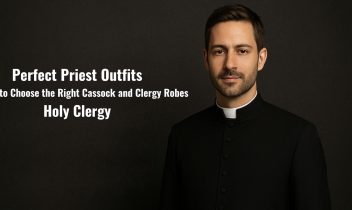
Recent Comments